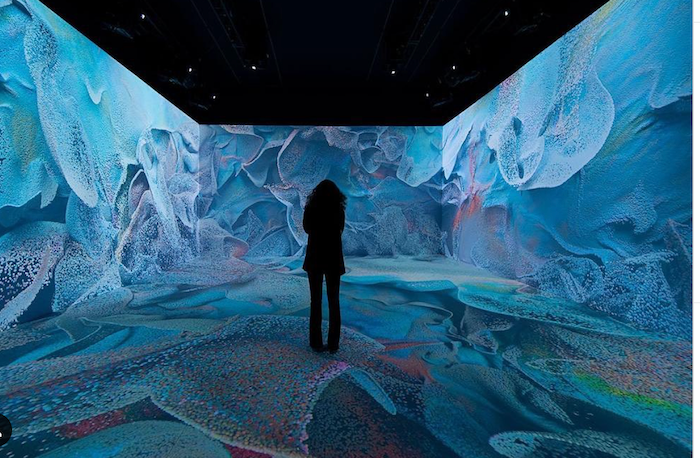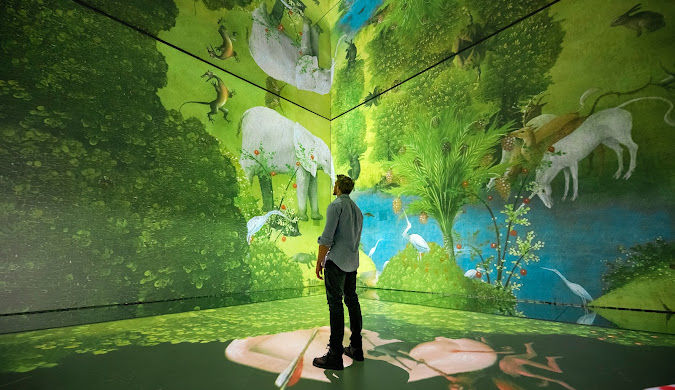I. Shifting Paradigms in Cultural Engagement
The rise of cloud exhibitions marks not merely a technological update in museum practice but a paradigm shift in cultural engagement.
Where once the museum was a fixed geographic location, with curated collections experienced in solemn galleries, the cloud has enabled distributed, on-demand access to cultural heritage.
The phenomenon has reshaped our understanding of what it means to “visit” an exhibition: we now speak of encounters and interactions rather than mere viewings.
This transition has brought forth profound questions about authenticity, authority, and the very definition of a museum in the digital age.
II. Infrastructures of the Virtual Museum
A cloud exhibition is not simply a digitized gallery. It is an entire ecosystem of infrastructures:
- Cloud Rendering and 3D Engines: These provide photorealistic replicas of objects and environments, allowing users to navigate in real time.
- Data Pipelines and APIs: Museums must collaborate across continents to share digitized collections, metadata, and research archives.
- Immersive Hardware: Though many users join via a browser, head-mounted displays and haptic gloves increasingly blur the line between physical and digital presence.
- AI-Driven Personalization: Recommendation engines shape individual journeys, tailoring content to age, background knowledge, or thematic preference.
The growth of such infrastructures demands not only investment but also global standards for interoperability, accessibility, and digital rights management.
III. Curatorship in the Age of the Cloud
Curatorship—once associated primarily with selecting and displaying objects—has evolved into the art of orchestrating experiences.
In cloud exhibitions, curators must collaborate with interface designers, interaction specialists, and data scientists.
Key shifts include:
- From Object-Centric to Experience-Centric: The focus has moved from merely displaying artifacts to crafting narrative flows.
- From Linear to Non-Linear Storytelling: Visitors can choose multiple paths; curators must think in terms of modular, recombinable content blocks.
- From Scarcity to Abundance: The online environment can host millions of artifacts, yet attention is finite; curators must curate attention as much as collections.
This expanded curatorial role raises new professional and ethical questions:
How can narratives remain inclusive and historically accurate in a medium that invites interactivity and personalization?
IV. The Psychology of Interaction
Research in cognitive science highlights that active participation enhances learning and memory retention.
Cloud exhibitions take advantage of this by embedding quizzes, decision points, or multiplayer challenges into virtual tours.
Psychological studies have observed several distinctive benefits:
- Embodied Cognition: Even simple avatar navigation or gesture-based interaction increases the sense of presence and recall.
- Social Motivation: Shared experiences—chat rooms, co-viewing, and collaborative tasks—stimulate curiosity and sustained attention.
- Narrative Transportation: Immersive story modes allow visitors to emotionally connect with historical figures or cultural contexts.
However, the same interactivity also demands careful cognitive load management; poorly designed interfaces can overwhelm or distract visitors, reducing both enjoyment and learning.
V. The Question of Authenticity
One of the most contested issues is whether virtual artifacts possess the same aura as originals.
Art theorists since Walter Benjamin have argued that the unique material presence of an artwork contributes to its cultural meaning.
Cloud exhibitions challenge this notion in two ways:
- Enhanced Perception: High-resolution scans and 3D models often reveal details invisible in the physical gallery.
- Contextual Reconstruction: Digital environments can re-create lost contexts—temple murals in their original architectural settings, or ancient statues under candlelight.
Rather than replacing physical encounters, cloud exhibitions often function as contextual amplifiers, offering layers of meaning that complement, rather than diminish, the aura of originals.
VI. Equity and Accessibility
The promise of cloud exhibitions lies in democratizing access to cultural heritage.
For students in remote regions, people with mobility impairments, or communities affected by conflict, the virtual museum can be the only viable bridge to global cultural participation.
Yet, digital inclusion is not guaranteed:
- Bandwidth Inequality: High-fidelity immersive experiences often require advanced infrastructure.
- Language Barriers: Multilingual AI translation is still uneven in quality, especially for smaller languages.
- Economic Disparities: Devices capable of immersive participation remain costly for many households.
To truly fulfill their democratizing potential, cloud exhibitions must be accompanied by policies that address the digital divide, from community learning hubs to subsidized hardware programs.

VII. Economics of the Virtual Cultural Sector
Cultural institutions have long relied on ticket sales, memberships, and philanthropy.
Cloud exhibitions open new but complex revenue streams: subscription-based access, freemium models, NFT-like collectibles, and virtual merchandising.
Museums now face the challenge of balancing openness with financial sustainability.
Commercialization risks alienating public trust, yet without stable revenue, the digital infrastructures that support access and preservation cannot thrive.
Innovative hybrid models—such as offering free educational exhibitions alongside premium immersive experiences—are emerging as potential solutions.
VIII. Ethical and Legal Dimensions
The shift to digital raises urgent ethical and legal questions:
- Intellectual Property: Who owns the rights to digitized replicas of public-domain artifacts?
- User Data and Privacy: Virtual platforms often track gaze, gestures, and conversation, requiring strict safeguards.
- Cultural Sovereignty: Indigenous and marginalized communities demand agency over how their heritage is represented online.
- Content Moderation: Interactive features can be misused for inappropriate or harmful behavior, requiring robust community governance.
These issues reveal that cloud exhibitions are not merely technical innovations but socio-legal arenas where cultural values are negotiated.
IX. Case Studies: Diverse Approaches
Several notable initiatives illustrate the range of strategies adopted worldwide:
- The British Museum’s “Sketchfab Collection”: Offers free, downloadable 3D models of artifacts, prioritizing open access.
- China’s Palace Museum Cloud Exhibitions: Integrates AI guides, live streaming, and educational mini-games to engage schoolchildren.
- Smithsonian 3D Digitization Program: Provides open-source tools and encourages cross-institutional collaboration.
- Virtual Biennales and Art Fairs: Merge physical installations with cloud-based global participation, expanding both audiences and revenue streams.
These case studies underscore that there is no single model for cloud exhibitions; strategies vary according to institutional missions, funding structures, and audience needs.
X. Toward Hybrid Futures
Looking forward, many experts envision hybrid cultural ecosystems where physical and virtual experiences are deeply intertwined.
Emerging possibilities include:
- AR-Enhanced On-Site Visits: Visitors in physical museums use their phones or glasses to access deeper contextual layers tied to cloud archives.
- Persistent Virtual Cultural Worlds: Long-term virtual spaces evolve over years, allowing ongoing dialogue between artists, historians, and the public.
- AI-Curated Personalized Trails: Platforms recommend thematic journeys across collections worldwide, reshaping lifelong cultural learning.
- Sensorial Expansion: Advances in haptics, olfactory displays, and spatial audio promise richer multimodal experiences.
Such futures suggest that the cloud is not an alternative to the museum but an integral dimension of cultural life, augmenting and expanding what is possible.
XI. Convergences and Tensions
The transformation driven by cloud exhibitions cannot be reduced to a simple success story.
It is characterized by convergences—between technology and humanistic inquiry, between local heritage and global audiences—but also by tensions—between access and commercialization, between immersion and authenticity, between innovation and ethical responsibility.
Understanding these dynamics requires ongoing dialogue among technologists, curators, educators, policy-makers, and the public.
XII. Closing Perspective: Culture as a Shared Horizon
Cloud exhibitions and interactive experiences, despite all the unresolved issues they raise, point toward a shared horizon of cultural participation.
They invite us to imagine a world in which access to humanity’s diverse heritage is not limited by geography, mobility, or socioeconomic status.
The success of this vision will depend not on technology alone but on the collective cultural will to use these tools inclusively, ethically, and creatively.
In this sense, cloud exhibitions are less a final solution than a continuing experiment in how humans relate to their past, present, and future through the lens of interactive culture.

















































